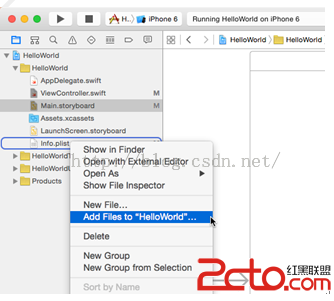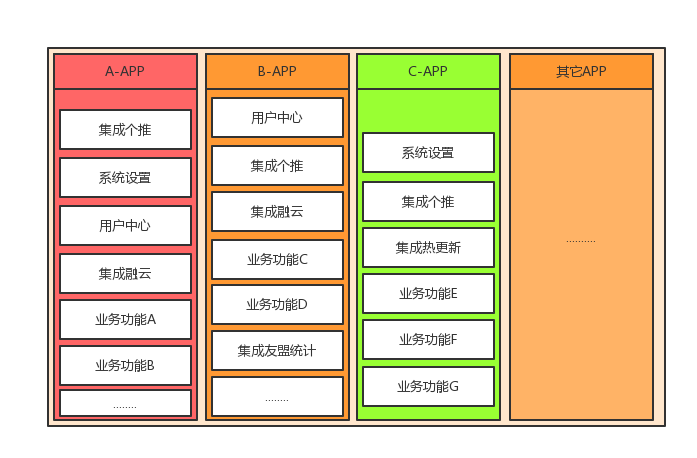IOS 多線程GCD詳解
Grand Central Dispatch (GCD)是Apple開發的一個多核編程的解決方法。
dispatch queue分成以下三種:
1)運行在主線程的Main queue,通過dispatch_get_main_queue獲取。
#definedispatch_get_main_queue() \DISPATCH_GLOBAL_OBJECT(dispatch_queue_t, _dispatch_main_q)
可以看出,dispatch_get_main_queue也是一種dispatch_queue_t。
2)並行隊列global dispatch queue,通過dispatch_get_global_queue獲取,由系統創建三個不同優先級的dispatch queue。並行隊列的執行順序與其加入隊列的順序相同。
3)串行隊列serial queues一般用於按順序同步訪問,可創建任意數量的串行隊列,各個串行隊列之間是並發的。
當想要任務按照某一個特定的順序執行時,串行隊列是很有用的。串行隊列在同一個時間只執行一個任務。我們可以使用串行隊列代替鎖去保護共享的數據。和鎖不同,一個串行隊列可以保證任務在一個可預知的順序下執行。
serial queues通過dispatch_queue_create創建,可以使用函數dispatch_retain和dispatch_release去增加或者減少引用計數。
GCD的用法:
//後台執行:dispatch_async(dispatch_get_global_queue(0,0), ^{//something});
//主線程執行:dispatch_async(dispatch_get_main_queue(), ^{//something});
//一次性執行:staticdispatch_once_t onceToken;
dispatch_once(&onceToken, ^{//code to be executed once});
//延遲2秒執行:doubledelayInSeconds =2.0;
dispatch_time_t popTime= dispatch_time(DISPATCH_TIME_NOW, delayInSeconds *NSEC_PER_SEC);
dispatch_after(popTime, dispatch_get_main_queue(),^(void){//code to be executed on the main queue after delay});
//自定義dispatch_queue_tdispatch_queue_t urls_queue = dispatch_queue_create("blog.devtang.com", NULL);
dispatch_async(urls_queue,^{//your code}); dispatch_release(urls_queue);
//合並匯總結果dispatch_group_t group =dispatch_group_create();
dispatch_group_async(group, dispatch_get_global_queue(0,0), ^{//並行執行的線程一});
dispatch_group_async(group, dispatch_get_global_queue(0,0), ^{//並行執行的線程二});
dispatch_group_notify(group, dispatch_get_global_queue(0,0), ^{//匯總結果});
一個應用GCD的例子:
dispatch_async(dispatch_get_global_queue(DISPATCH_QUEUE_PRIORITY_DEFAULT,0), ^{
NSURL* url = [NSURL URLWithString:@"http://www.baidu.com"];
NSError*error;
NSString* data = [NSString stringWithContentsOfURL:url encoding:NSUTF8StringEncoding error:&error];if(data !=nil) {
dispatch_async(dispatch_get_main_queue(),^{
NSLog(@"call back, the data is: %@", data);
});
}else{
NSLog(@"error when download:%@", error);
}
});
GCD的另一個用處是可以讓程序在後台較長久的運行。
在沒有使用GCD時,當app被按home鍵退出後,app僅有最多5秒鐘的時候做一些保存或清理資源的工作。但是在使用GCD後,app最多有10分鐘的時間在後台長久運行。這個時間可以用來做清理本地緩存,發送統計數據等工作。
讓程序在後台長久運行的示例代碼如下:
//AppDelegate.h文件@property (assign, nonatomic) UIBackgroundTaskIdentifier backgroundUpdateTask;//AppDelegate.m文件- (void)applicationDidEnterBackground:(UIApplication *)application
{
[self beingBackgroundUpdateTask];//在這裡加上你需要長久運行的代碼[self endBackgroundUpdateTask];
}- (void)beingBackgroundUpdateTask
{
self.backgroundUpdateTask= [[UIApplication sharedApplication] beginBackgroundTaskWithExpirationHandler:^{
[self endBackgroundUpdateTask];
}];
}- (void)endBackgroundUpdateTask
{
[[UIApplication sharedApplication] endBackgroundTask: self.backgroundUpdateTask];
self.backgroundUpdateTask=UIBackgroundTaskInvalid;
}
文/牽左手不離(簡書作者)
原文鏈接:http://www.jianshu.com/p/2c584601e3bf
著作權歸作者所有,轉載請聯系作者獲得授權,並標注“簡書作者”。
以上就是對 IOS多線程GCD 的資料整理,後續繼續補充相關資料,謝謝大家對本站的支持!




